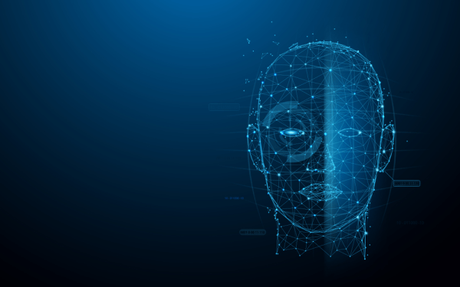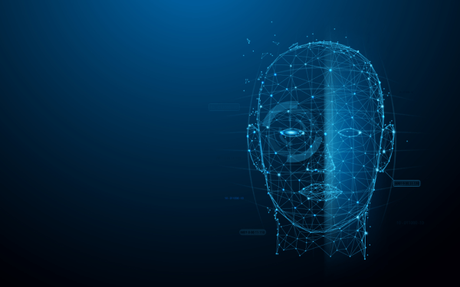The digital age has enabled online businesses to create better business opportunities, reach an unprecedented amount of target audience and last but not least, it has helped online businesses to adopt fraud prevention measures that are highly effective. Biometric verification is one such benefit of the current digital age as it can help online businesses to verify the identity of customers in real-time.
For years, biometric verification was synonymous to fingerprint scanners but it also meant that the cost of installing such a system was not just for the software application but the hardware installation as well. But now with technologies like face recognition and liveness detection, the unique facial features of a person can be used to detect their identity.
Biometric Verification through Face
Biometric identification with the help of facial features means that not only the authenticity of a still image can be verified in real-time but in case of a live-feed, the system can check whether the person is actually present at the time of the verification and not a facial spoof or stolen still image is being used to either register for an online account or gain access to a secure account.
As one can imagine, unlike common methods of biometric authentication, face verification can be used to perform user validation even at remote places where the common biometric hardware cannot be supplied. Biometric verification has been around for enough years that businesses from all over the economic sphere have used it in one form or other but the inability of fingerprint scans or iris based user verifications to operate in remote condition was always a hindrance for businesses.
Although the introduction of fingerprint scanners and iris scanners in tablets, laptops and mobile phones was a welcome move in the implementation of biometric authentication. Unfortunately, the high cost of biometric induced devices has kept the onboarding a problem, thus slashing the hopes of a universal biometric regime.
But face verification based biometric identification has opened a new avenue for user authentication which means that online businesses can leverage this technology to prevent online fraud and digital scams. Liveness detection is an accurate method to fight facial spoofing, something that is quickly becoming a medium to defraud online businesses.
Facial Spoofing - Ultimate enemy of Biometric Verification


Spoofing is the idea of 'fooling' a system, where an intruder attempts to gain unauthorised access to a certain individual's system. The element of spoofing also contains the manipulated impersonation of oneself to gain access to a system through malicious ways. Anti Spoofing, on the other hand, is the opposite of Spoofing, that is the process to stop from spoofing to take place. Anti Spoofing contains the techniques that involve minimising the potential ability of fraud to happen, with respect to facial recognition systems and associated technology.
But before we discuss different aspects of biometric authentication with the help of facial recognition technology, here is something that you must know about liveness detection.
Liveness Detection is one of the anti-spoofing measures to be protected from unauthorised access. Ever since more and more traditional identity management systems are witnessing spoof attacks. To minimise the possibility of having break-in attempts, having appropriate level of liveness detection are useful. Implementation of liveness detection for the biometric verification process enhance it to reach its maximum potential. It enables a user to feel safe and secure, thus leading to greater client trust and paving a path of improved business-client exchange and relations.
Common challenges in Biometric Verification
Scammers use a still photograph of someone, printed or displayed on a digital device in front of the sensor.
Print Attack - Scammers use a still photograph of someone, printed or displayed on a digital device in front of the sensor.
Replay/Video Attack - Scammers use a pre-recorded video of a potential victim set on a loop. This approach ensures behavioural and facial elements appear more 'natural' in front of the sensor.
3D Mask - A step ahead, for advanced FR systems. Scammers have created specialised/realistic 3D masks of potential 'victim identities', once worn on a face by a fraudster and used to imitate realistic facial movements. This sort of attack helps deceive extra layers of security like depth sensors.
Biometric Verification Opportunities
There are several opportunities that accompany a biometric identification system and it can be easily performed by a regular 2-D camera, in this case, a deep learning solution with a custom neural network is required. Here are a few of the opportunities explain in detail below
Image Quality Assessment
This solution is based on comparing the original image with an image processed with filtering. A paper suggested that differences between fake images vary from real ones and it could be detected automatically. Features for image quality are: Mean Squared Error, Average Difference or Total Edge/Corner Difference. The next step is to send them to the classifier in order to determine if it's a 'real' face or 'fake' face.
Image Distortion Analysis
Elements such as specular reflection, blurriness, chromatic moment and colour diversity) can be sent for classification and placed into a classifier - trained for different types of spoofing attacks.
Deep Neural Network model
This is based on a model built with CNN (Convolutional Neural Network, which is the most popular neural network in image analysis). This aspect involves a cropped image of a face to pass into a neural network and then be processed through neural layers in order to classify as real or fake.
There are several identity verification systems in place that take help from biometric identification technology to verify the identity of their end-users. They also use the unique facial features of a user to detect the authenticity of an identity document, thus establishing overall identity verification protocols for fraud prevention and protection against account takeover.
Online businesses have a lot at stake due to the digital age and even lot more to earn from in case of a foolproof customer onboarding process. Imagine a digital world, where the unique facial features of a person act as their access codes instead of an ancient password that is susceptible to hacking as well as cracking by a smart password cracking tool. Biometric verification is truly the next-age wonder that can help online businesses to capitalize on their strengths and leave the rest to technology.
